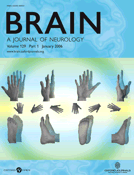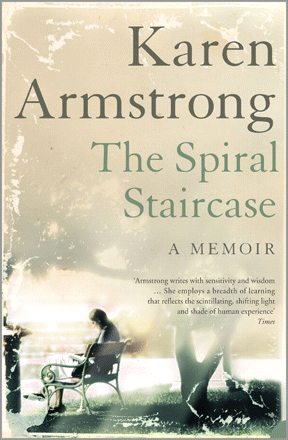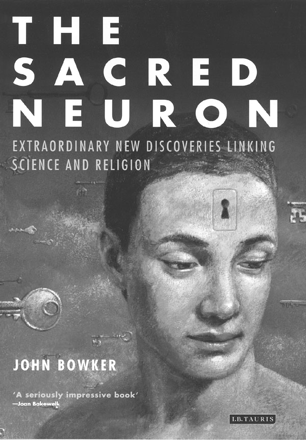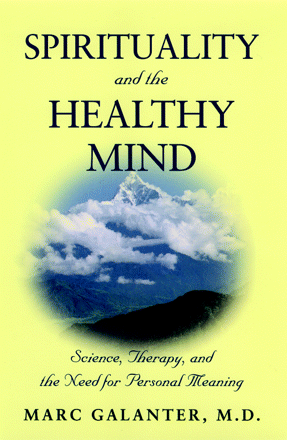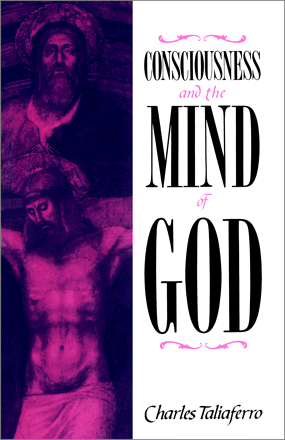-
PDF
- Split View
-
Views
-
Cite
Cite
Alister McGrath, THE SPIRAL STAIRCASE: A MEMOIR By Karen Armstrong 2005 London: Harper Perennial Price: £8.99 ISBN: 0007122292 THE SACRED NEURON: EXTRAORDINARY NEW DISCOVERIES LINKING SCIENCE AND RELIGION By John Bowker 2005 London: I B Tauris Price: £18.99 ISBN: 1850434816 SPIRITUALITY AND THE HEALTHY MIND: SCIENCE, THERAPY, AND THE NEED FOR PERSONAL MEANING By Mark Galanter 2005 Oxford: Oxford University Press Price: £19.99 ISBN: 0195176693 CONSCIOUSNESS AND THE MIND OF GOD By Charles Taliaferro 2005 Cambridge: Cambridge University Press Price: £29.00 ISBN: 0521673461, Brain, Volume 129, Issue 1, January 2006, Pages 278–282, https://doi.org/10.1093/brain/awh719
Close - Share Icon Share
Spirituality and well-being: some recent discussions
In the last 15 years, there has been growing interest in exploring the relationship between spirituality and human well-being. Each of these four books under review reflects this development, and offers its own contribution to a discussion of its relevance, especially in a healthcare setting. Spirituality, which would once have been excoriated as superstitious irrationality, best banished from professional conversations, is coming to play an increasingly important role in Western culture.
That specific word ‘spirituality’ needs comment. While it might be taken to include the ideas of traditional religions—such as Christianity, Islam or Judaism—its emphasis lies more on the personal values and beliefs of the individual, which they regard as giving themselves meaning and significance. Increasingly, the term is being used to refer to personal worldviews that emphasize the importance of discerning meaning in life. While this by no means excludes traditional religious beliefs, many of the spiritualities encountered in Western culture are idiosyncratic and eclectic, not conforming to traditional patterns. Yet while these spiritualities may seem vague, there is no doubt of their importance for those who hold them: they are seen to give life coherence and significance and are increasingly being realized to have significance in a broader context—for example, coping with grief and depression.
So why has spirituality come to be of such importance to so many people? The causes of this cultural development are ultimately unclear, although a number of factors can be identified that are probably part of the explanation.
In the first place, the rise of post-modernism—a generally vague outlook on life, characterized more by its dislike of the intellectual rigidity of the modern world than its own positive proposals for alternatives—has led to a somewhat negative evaluation of Enlightenment rationalism, once the oxygen of Western culture. While it is easy to point out post-modernity's many inconsistencies, it is important to appreciate the pressures that brought the movement into being in the first place. The modernist insistence, characteristic of the Enlightenment, that there was only one, rational, way of making sense of things led to a radical curtailment of what could be regarded as ‘real’. At its heart, post-modernity is a protest against this attenuated vision of reality.
Much of what is now termed ‘spirituality’ would once have been dismissed as irrational superstitious nonsense by rationalist writers. Yet the surge of interest in spirituality within the West is perhaps a telling indication that this austere curtailment of reality was seen to impoverish life. It must be stressed that this heightened awareness of spiritual issues has not led to a surge of interest in traditional organized religions. The empirical evidence suggests that those who talk about ‘spirituality’ often mean a privatized worldview, which does not necessarily have any connection with the beliefs and organizational patterns of traditional religion in the West.
A second development that may be of relevance here is the gradual erosion of the popular cultural stereotype, which holds science and religion to be locked in mortal combat. The so-called ‘warfare’ model of the interaction of science and religion has been particularly significant in popular scientific writing. However, in recent years the plausibility of this model has been eroded to the point where it is no longer regarded as reliable by historians of science. History points to a much more complex pattern, with the general relationship of the disciplines often being benign, if occasionally strained (See, for example, Lindberg and Numbers, 2003). Revisionist accounts of the Galileo controversy have demonstrated the importance of social factors in precipitating and sustaining this perception of ‘warfare’. Although these new historical insights are taking a frustratingly long time to trickle down into popular culture and journalism, it is clear that the transition is beginning to take place.
Yet perhaps the most significant factor of all in generating a new interest in the place of spirituality in healthcare has been a growing body of evidence-based studies, suggesting that religious commitment may be a positive factor in relation to general levels of well-being and longevity (for a useful survey, Koenig and Cohen, 2002). It is important not to overstate things in this respect. This research is ongoing, and its conclusions to date are provisional. It is, however, now quite clear that the traditional rationalist stereotype, which holds that religious belief is oppressive or pathological, and hence constitutes an impediment to well-being, is not well grounded in the evidence. The evidence suggests that people find their religious beliefs helpful in times of distress and tension, with important consequences for their well-being. Our culture's criterion of acceptability now seems to be not ‘is it right?’, but ‘does it work?’ And the simple fact is that religious belief works for many, many people, giving direction, purpose and stability to their lives—witness the massive sales and impact of Rick Warren's The Purpose-Driven Life. So should spirituality become an issue in healthcare?
That is certainly the view of Marc Galanter, Professor of Psychiatry and Director of the Division of Alcoholism and Substance Abuse at New York University's Medical Centre. In his Spirituality and the Healthy Mind, he provides a carefully argued case for taking patients' spiritualities into account in psychiatric care. In part, this argument reflects the specifically American setting of Galanter's practice and research. As he correctly notes, 95% of the American population believe in God, or at least some transcendent or spiritual force. More importantly, many believe that such a God plays a significant role in their everyday lives, giving them meaning and direction.
It is this aspect of spirituality that Galanter regards as being of such importance. Traditional psychiatry, he suggests, is good at dealing with symptoms and conditions through medication. Yet it does not address the issues of meaning in life, which often underlie conditions such as depression. Now some of his professional colleagues would doubtless, and not without reason, suggest that psychiatry has quite enough to worry about without concerning itself with such difficult issues as adjudicating between competing worldviews. Yet Galanter's point is more subtle: he is convinced that traditional psychiatry does not recognize the crucial role played by a person's spirituality in relation to their well-being. He is not asking psychiatrists to identify the most therapeutically effective spirituality and impose it on their patients; he is asking for psychiatrists to learn to work with patients' existing spiritualities, aware of the therapeutic possibilities that they enable.
Galanter's analysis of the nature and role of spirituality is generous, yet critical. He relentlessly exposes the vagueness of the notion and the ensuing problems that this definitional void creates. He is also aware that spiritualities are occasionally the self-fulfilling products of their creators, spiritual placebos whose effects are entirely predictable. Yet, when allowance is made for such difficulties, something remains—something that, according to Galanter, has been systematically excluded from modern professional healthcare: the pursuit of meaning in life.
In arguing his case, Galanter assembles an array of observations, some of which are perhaps too anecdotal and generalized to allow broad and sweeping conclusions to be drawn. He is able to demonstrate, without undue difficulty, that psychiatry marginalizes, even totally ignores, spirituality. ‘The American Psychiatric Association's 1070-page Essentials of Clinical Psychiatry makes no mention of it’ (p. 12). Equally, the same body's 2000 published pages of guidelines for clinical care make no mention ‘of the importance of the hopes and aspirations of patients, and of how they should be helped to lead more meaningful lives’ (p. 29).
The analysis that Galanter provides in asserting that spirituality plays a significant role for patients, if considered in isolation, might not appear especially persuasive. After all, equally anecdotal counter-examples would not be hard to find. Yet Galanter's material needs to be set against the backdrop of a growing body of evidence-based publications noting substantially the same points—namely, that spirituality is, in the first place, important as a resource in healthcare, and in the second place, virtually excluded as an issue from much traditional healthcare theory and practice. Much existing healthcare is ‘physiologically or cognitively orientated’, with the inevitable result that it ‘circumvents the need for considering what is meaningful in a person's life’ (p. 248). Citing Thomas Kuhn's work on the development of scientific revolutions, Galanter suggests that the time may be right for the emergence of a ‘new paradigm’ (p. 250).
Galanter's analysis—and, indeed, his general recommendations—is given added weight by what we might regard as a single case study in the issues he highlights. Karen Armstrong's The Spiral Staircase tells the story of an idealistic young woman who, at the age of 17, made the decision to enter a Catholic convent. It was entirely her own decision made in the face of hostility from her parents. After 7 years of what she now considers to have been a spiritually austere and personally destructive regime, she made the traumatic decision to leave the convent, and re-enter the secular world. Clearly damaged and wounded by her experiences, she found it difficult to discover any sense of personal identity and purpose. The story is well told and worth reading. The episode in which her doctoral thesis (on aspects of Tennyson's poetry) was failed outright by a hostile examiner is particularly revealing.
Yet Armstrong's problems had only begun. She suffered memory blackouts and disturbing hallucinations, which made it impossible for her to hold down a regular job. She was told that these arose from her own refusal to accept her femininity and sexuality. Gradually, the truth emerged. After a particularly severe episode at Baker Street Underground Station, Armstrong was admitted to hospital, where she was correctly diagnosed as having temporal lobe epilepsy. How, she wondered, could she cope with this, on top of all her other woes?
As Galanter would probably have predicted, the answer lay in spirituality. Although Armstrong has now largely overcome the anger she felt at the way she was treated, as a woman, by the Catholic church in the 1960s, her spirituality is not Catholic; indeed, not specifically Christian. In part, this reflects her idea that Christianity is far too propositional and cerebral in its understanding of the nature of reality and especially God. She has found solace in a more generalized form of spirituality, which recognizes that human beings have intimations of transcendence that are ultimately incapable of being reduced to the level of words. (As a theologian, I might add here that such insights are actually deeply embedded within the Christian tradition, although apparently not that rather dogmatic and unattractive form which Armstrong encountered during her convent years).
Now a successful popular author dealing with religious themes, Armstrong relates how she found her outlook on her situation transformed through what I can only describe as a spiritual awakening, catalysed by a reading of T. S. Eliot's celebrated poem Ash Wednesday. In this series of six poems, Eliot describes his own process of spiritual discernment, which he likens to the ascent of a theoretical spiral staircase (the image that gives Armstrong's memoir its title.) For Eliot, that gradual process of ascent led to a Christian faith; for Armstrong, it led her to discover truths about the vulnerability of her existence and her need to develop coping strategies—strategies that are unquestionably spiritual, in the broad sense of that term.
If one can judge a book by its title, John Bowker's The Sacred Neuron ought to be far and away from the most relevant title here reviewed for neurologists. Its bold subtitle—Extraordinary New Discoveries Linking Science and Religion—suggests that it is a thoroughly up-to-date work, reporting on new developments that cast light on age-old religious issues. The jacket copy promises still more, telling us how ‘recent research in the neurosciences’ offers us fascinating and radical new insights into how we make moral, aesthetic and religious judgements. Unwisely, perhaps, I picked up this book with a sense of anticipation. What would Bowker make of Churchland's neuron hypothesis? (See the issues raised by Gold and Stoljar, 1999; for the original ideas, see works such as Churchland, 1995, 1998.) Or Gerald Edelman's concept of neural Darwinism? (e.g. see Edelman, 1987; Eriksson et al., 1998). Each of these, it had long seemed to me, was laden with significance for any religious account of reality. I found myself looking forward to the keen, critical and ground-breaking discussion that Bowker promised. I had hoped that other religious writers would engage with such questions and had not found a satisfactory response to date.
I have to report that I felt totally disappointed by this book. In fact, I fear I must go further than this. As someone who spends much of his professional life trying to encourage an informed engagement between science and religion, I would judge this to be precisely the kind of work that gives this enterprise a bad name. Its grasp of neurology was depressingly superficial; the quality of its engagement with issues of neuroscience, though doubtless impressive to those who are as yet unfamiliar with the word ‘amygdala’, is amateurish.
A little historical research in the Bodleian Library helped sort out the problem. Bowker's book is based on his 2003 Hensley Henson lectures at Oxford University. The title that Bowker chose for these lectures was ‘The Appeal to History as an Integral Part of Christian Apologetics’. This makes no reference whatsoever to science, let alone the grossly inflated claims we find in the title of his book. Once this point is appreciated, the structure of the book becomes clearer. Science turns out to be essentially peripheral to the argument, which is based mostly on traditional philosophical analysis, spiced up with some cultural musings.
Bowker's fundamental theme is to engage with the widespread contemporary assumption that ethical and aesthetic judgements simply reflect our personal preferences. There seems to be no ultimate authority that may settle such disputes. Using a wide range of cultural resources, Bowker navigates his way to the conclusion that, while we can no longer speak meaningfully or persuasively—as Plato once did—of ‘the good’ or ‘the beautiful’ as transcendent categories, independent of the observer, there are nonetheless ‘conducive properties’ that can lead independent thinkers to converging conclusions. The argument is not totally without interest, but the role played by the natural sciences is peripheral—as one would expect, in fact, from a series of addresses given along the lines laid down for the Hensley Henson lectures. I could possibly recommend this book for those interested in beginning to think about Chinese art, but not for those looking for intelligent and informed reflection on the implications of the current state of the neurosciences for human cognition. And, curiously, the relative rigour with which Bowker addresses issues of ethics and aesthetics is not carried over into his discussion of religion, especially in his final chapter, which seems to have been written for a somewhat different audience.
This is not to say that Bowker completely ignores neurology. He uses the term ‘neuron’ five times, according to his index, which is somewhat less than one might expect, given the title of the work—a title that perhaps reflects the older study of Rhawn Joseph, The Naked Neuron (Joseph, 1993). Bowker does engage, in a rather desultory and unsatisfactory way with A. R. Damasio; it is not, however, anything that could remotely be described as a ground-breaking discussion, and it certainly left me irritated with its superficiality. Darwin's name is mentioned, but there is no attempt to engage with the question of the evolutionary roots of human values—one of the hottest topics in contemporary moral debates, and one that cries out at least for acknowledgement, still more for a decent discussion. If Bowker wants to write more in this field, he might perhaps give more thought to the titles he chooses for his books and how he chooses to promote them.
No accusations of amateurism or superficiality can be levelled against the final work to be reviewed here. Charles Taliaferro is one of America's most interesting philosophers of religion. In this welcome reissue of a work which first appeared in 1994, Taliaferro provides a magisterial survey of the paradigms of consciousness that dominated the intellectual scene at that time. Consciousness and the Mind of God offers as comprehensive a survey of the views of Paul Churchland and other luminaries of this era as one might want. If only the reissue had been accompanied by an update! Taliaferro is critical of the reductionist assumptions that he discerns within many of these theories and offers his reader a splendid intellectual dissection of their intellectual structures and implications. The analysis is invariably informed and judicious.
This analysis, however, is essentially the preface to Taliaferro's real concern, which is to displace—or perhaps replace—such approaches to consciousness with something more satisfactory to someone who believes in God, and sees such a belief as offering both a foundation and explanation for the phenomenon of consciousness. Taliaferro's solution is to develop an ‘integrative theism’ that rests on a non-physicalist construal of the relation between God and the world. While many readers of this journal will wish to raise questions about such an approach, Taliaferro's arguments merit close attention.
These four works, then, engage with a field that is likely to be of continued importance in coming years. The importance of the issues they raise for readers of this journal can be summarized under two broad headings. First, there is the question of the importance of the neurosciences in relation to issues of human judgement—whether moral, rational, aesthetic or religious (if, indeed, these four categories can be distinguished). There is no doubt that the emerging findings of the neurosciences need to be fed into the public arena in a responsible and informed way and that those who wish to engage with them from the perspective of other disciplines are going to have to be neurologically informed before they fire off their religious salvoes. But I suspect it is the second area that is of greater importance—namely, the emerging view that spirituality is generally conducive to human well-being. If this is so—and can be shown to be so through rigorous empirical studies rather than anecdotal musings—it is of enormous significance for all involved in healthcare, particularly in the field of mental health.
References
Churchland PM. The engine of reason, the seat of the soul: a philosophical journey into the brain. Cambridge, MA: MIT Press;
Churchland PM. Conceptual similarity across sensory and neural diversity: the Fodor/Lepore challenge answered.
Eriksson PS, Perfilieva E, Bjork-Eriksson T, Alborn AM, Nordborg C, Peterson DA, et al. Neurogenesis in the adult human hippocampus.
Gold I, Stoljar DA. Neuron doctrine in the philosophy of neuroscience.
Joseph, R. The naked neuron. Evolution and the languages of the body and brain. New York: Plenum;
Koenig HG, Cohen HJ. The link between religion and health: psychoneuroimmunology and the faith factor. Oxford: Oxford University Press;

